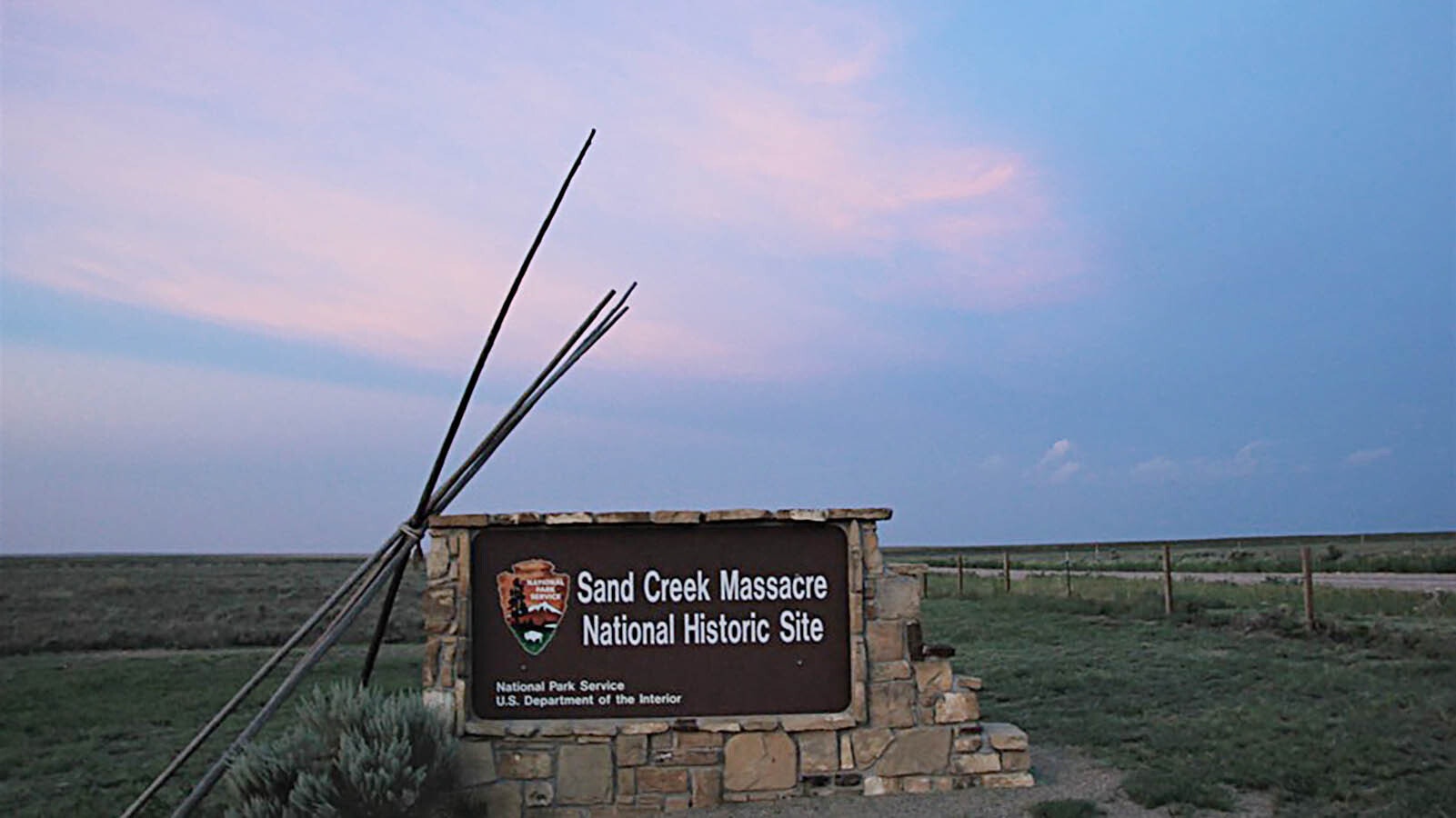Ben Ridgley of Riverton can trace his ancestry directly back to one of the most horrific episodes in the history of the West.
“My great-, great-grandfather was a survivor of the Sand Creek Massacre,” Ridgley told Cowboy State Daily on Friday.
A Northern Arapaho elder and director of the Tribal Historic Preservation Office in Riverton, Ridgley said the massacre wasn’t the only atrocity to stem from that event.
“They (Army troops) paraded through Denver with the body parts of some of the people they murdered at Sand Creek,” he said.
Ridgely was among tribal representatives present during a recent ceremony at the Sand Creek Massacre Site in Colorado. It was to acknowledge the site’s protected area being more than doubled to encompass 6,503 acres. Interior Secretary Deb Haaland and many other government officials and dignitaries were there.
The site is roughly four hours southeast of Cheyenne.
The expansion and growing recognition of the site “is long overdue,” Ridgley said. “The history is there: How they treated us, why we were dispersed and why we are in Wyoming today.”
‘Mass Murder’
It was brutally cold at the Sand Creek site on Nov. 29, 1864. That’s when 675 troops under the command of Army Col. John Chivington attacked an encampment of Arapaho and Cheyenne people.
The Native Americans numbered about 750 – most of them women, children and elderly. Their leaders thought they had successfully negotiated a peace agreement with the Army and that their people were safe.
Chivington’s troops indiscriminatingly poured small arms and howitzer fire into the encampment. When some of the Native Americans tried to flee down a dry creek bed, soldiers followed them, shooting children and the elderly for sport. Later, they desecrated and mutilated some of the bodies, taking body parts as trophies.
At least 230 Arapaho and Cheyenne were killed.
“It was mass murder,” Ridgley said. “If you did that in today’s society, you would get 100 life terms in prison.”
Chivington and his men never faced any serious repercussions for their actions.
‘We Are Still Here’
A Colorado-based conservation fund negotiated a sale with a private landowner, adding nearly 3,500 acres to the Sand Creek historic preservation site. That will protect the land from any development, Ridgley said.
The tribes also are partnering with some Colorado school districts to include more lessons about the massacre and the area’s Native American history in classrooms, he said.
“There were so many tragic moments there” at Sand Creek, and it’s vital that people never forget, Ridgley said, adding it’s also good to see Native history and culture getting wider acknowledgement.
“It just shows that we are still here,” Ridgley said. “We still have our culture. They didn’t do their assigned job of annihilating us.”





